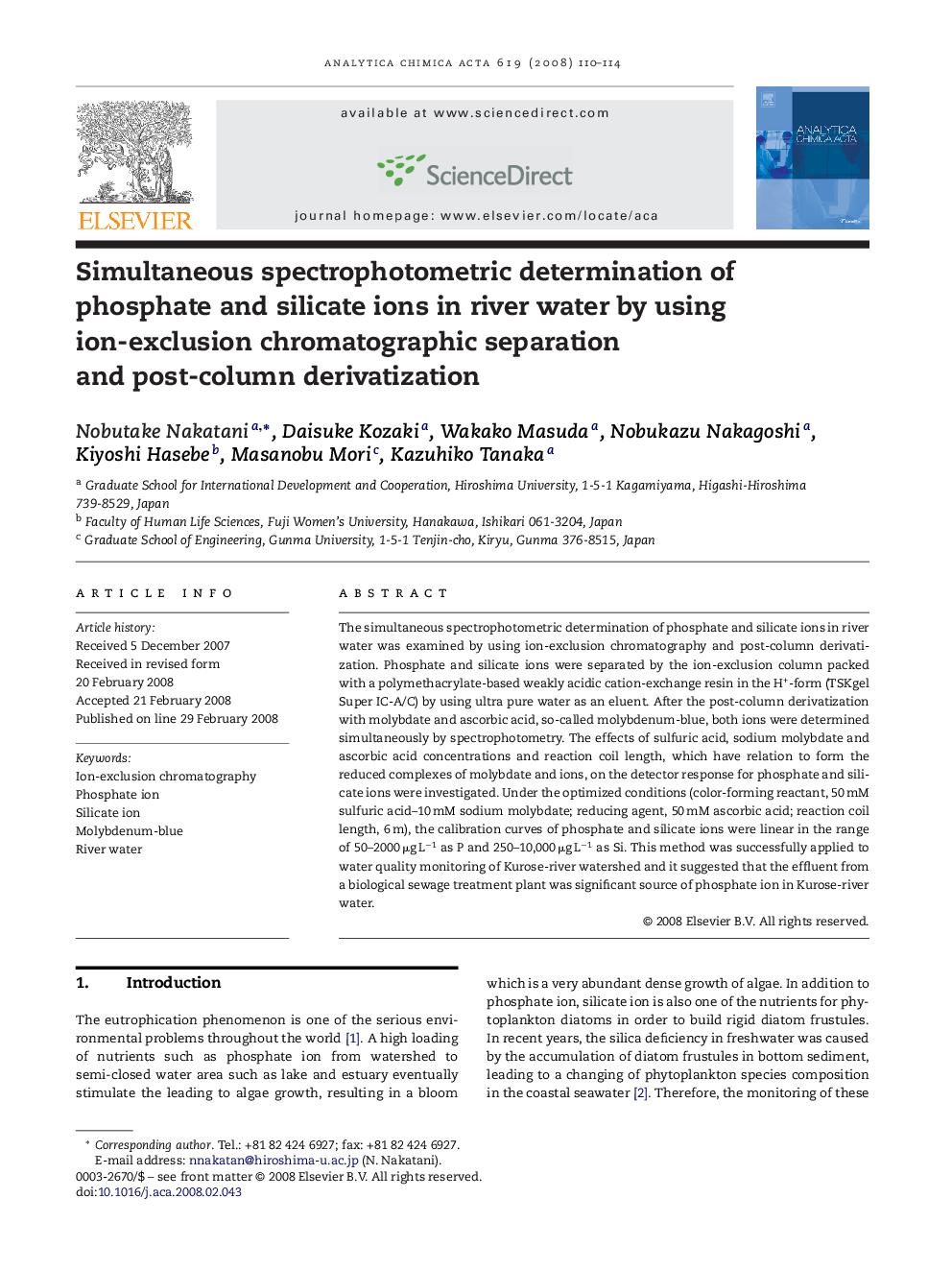| Article ID | Journal | Published Year | Pages | File Type |
|---|---|---|---|---|
| 1169502 | Analytica Chimica Acta | 2008 | 5 Pages |
Abstract
The simultaneous spectrophotometric determination of phosphate and silicate ions in river water was examined by using ion-exclusion chromatography and post-column derivatization. Phosphate and silicate ions were separated by the ion-exclusion column packed with a polymethacrylate-based weakly acidic cation-exchange resin in the H+-form (TSKgel Super IC-A/C) by using ultra pure water as an eluent. After the post-column derivatization with molybdate and ascorbic acid, so-called molybdenum-blue, both ions were determined simultaneously by spectrophotometry. The effects of sulfuric acid, sodium molybdate and ascorbic acid concentrations and reaction coil length, which have relation to form the reduced complexes of molybdate and ions, on the detector response for phosphate and silicate ions were investigated. Under the optimized conditions (color-forming reactant, 50 mM sulfuric acid-10 mM sodium molybdate; reducing agent, 50 mM ascorbic acid; reaction coil length, 6 m), the calibration curves of phosphate and silicate ions were linear in the range of 50-2000 μg Lâ1 as P and 250-10,000 μg Lâ1 as Si. This method was successfully applied to water quality monitoring of Kurose-river watershed and it suggested that the effluent from a biological sewage treatment plant was significant source of phosphate ion in Kurose-river water.
Related Topics
Physical Sciences and Engineering
Chemistry
Analytical Chemistry
Authors
Nobutake Nakatani, Daisuke Kozaki, Wakako Masuda, Nobukazu Nakagoshi, Kiyoshi Hasebe, Masanobu Mori, Kazuhiko Tanaka,
